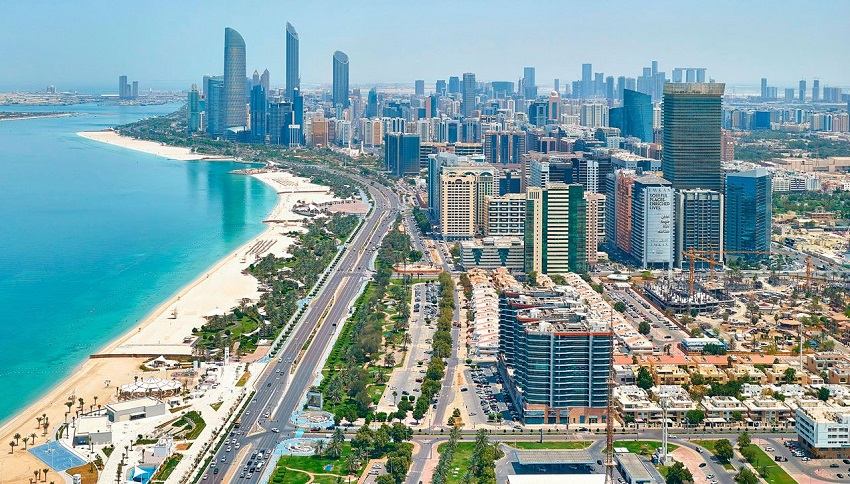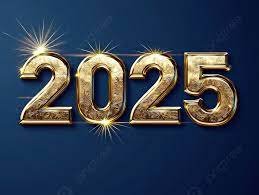Now Reading: Abu Dhabi Property: Diversifying for Dynamic Future Growth
-
01
Abu Dhabi Property: Diversifying for Dynamic Future Growth
Abu Dhabi Property: Diversifying for Dynamic Future Growth
Table of Contents
Abu Dhabi Property: real estate market is undergoing a significant and strategic transformation, moving beyond its traditional reliance on luxury residential and prime commercial offerings to embrace a far more diversified portfolio of property types. This evolution, a cornerstone of the emirate’s ambitious economic vision for 2030 and beyond, is driven by a confluence of factors including rapid population growth, economic diversification, a steadfast commitment to sustainability, and a proactive approach to attracting a broader spectrum of residents and industries. By mid-2025, this diversification is clearly evident, fostering greater market resilience, enhancing livability, and solidifying Abu Dhabi’s position as a global investment hub.
The Strategic Imperative for Diversification
Historically, Abu Dhabi’s real estate market was characterized by a focus on high-end apartments and villas, particularly in prime investment zones like Yas Island, Saadiyat Island, and Al Reem Island, alongside Grade A office spaces. While these segments remain robust, the emirate’s leadership recognized the need for a more comprehensive and inclusive real estate ecosystem to support sustained economic growth and accommodate a rapidly expanding and diversifying population.
The key drivers behind this strategic pivot include:
- Economic Diversification (Abu Dhabi Economic Vision 2030): The Vision 2030 plan aims to transition Abu Dhabi from an oil-reliant economy to a knowledge-based, sustainable, and diversified economy. This necessitates supporting emerging sectors like technology, healthcare, education, tourism, and advanced manufacturing, each requiring specific real estate solutions.
- Population Growth and Demographic Shifts: Abu Dhabi’s population continues to grow, attracting a diverse workforce with varying income levels and lifestyle needs. This necessitates a broader range of housing options beyond luxury, including affordable and mid-market residential units.
- Enhanced Livability and Quality of Life: The government’s focus on creating a world-class liveable city for all residents requires integrated communities that cater to diverse needs, fostering social cohesion and access to amenities. The recent launch of the Value Housing Programme (March 2025) exemplifies this commitment to enhancing quality of life through accessible housing.
- Global Competitiveness: To attract top talent and multinational corporations, Abu Dhabi must offer a real estate landscape that rivals other global cities in terms of variety, quality, and sustainability.
- Market Resilience: Diversifying property types reduces market vulnerability to fluctuations in any single segment, creating a more stable and resilient real estate sector.
- Sustainability Goals: Aligned with the UAE’s Net Zero by 2050 Strategic Initiative, there’s a strong push for eco-friendly and sustainable developments across all property types.
Emerging and Expanding Property Types

Abu Dhabi’s real estate market is now seeing a dynamic expansion into several key property categories:
- Affordable and Mid-Market Housing:
- Recognizing the need to accommodate a wider range of income brackets, Abu Dhabi is actively promoting the development of affordable and mid-market residential units. The Value Housing Programme, launched by the Department of Municipalities and Transport (DMT) in March 2025, is a prime example. This initiative partners with developers like Sdeira Group and Central Holding Group to provide high-quality, sustainable, and affordable housing solutions.
- Areas like Khalifa City and Mohammed Bin Zayed City (MBZ City) are seeing increased focus on budget-friendly apartments and villas, catering to families and professionals seeking accessible living options. This diversification helps retain talent and fosters long-term residency.
- Mixed-Use Communities:
- These integrated developments combine residential, commercial, retail, hospitality, and recreational spaces within a single master-planned environment. They offer a “live, work, play” concept, reducing commute times and enhancing convenience.
- Examples include ongoing expansions in areas like Yas Island, Al Maryah Island, and Al Reem Island, where new phases increasingly incorporate diverse elements, creating self-contained and vibrant neighborhoods. Yas Bay, for instance, blends residential units with entertainment, dining, and retail.
- Branded Residences:
- While luxury has always been a segment, branded residences are a distinct category. These are residential units associated with a luxury brand (e.g., hospitality chains, fashion houses), offering premium services, amenities, and design standards synonymous with the brand.
- The market for branded residences in Abu Dhabi is thriving in 2025, with strong demand from investors seeking high capital appreciation and a distinctive lifestyle. High-profile partnerships, such as those with St. Regis Hotels & Resorts on Maryah Island or Mandarin Oriental on Saadiyat Island, exemplify this trend. These properties often command higher prices and deliver attractive rental yields, appealing to a sophisticated investor base.
- Eco-Friendly and Sustainable Developments:
- Abu Dhabi is committed to green urbanism. Masdar City remains a global exemplar of a zero-carbon, zero-waste city, continuously integrating solar power, smart transport, and sustainable infrastructure.
- Beyond Masdar, new developments are increasingly incorporating sustainable building practices, energy-efficient designs, water conservation technologies (e.g., wastewater recycling for irrigation), and extensive green spaces, aligning with the Estidama Pearl Building Rating System. This caters to a growing segment of environmentally conscious residents and investors.
- Specialized Commercial and Industrial Zones:
- To support economic diversification, Abu Dhabi is developing specialized free zones and industrial parks tailored for specific sectors.
- Khalifa Economic Zones Abu Dhabi (KEZAD) is a prime example, offering purpose-built industrial and logistics infrastructure for sectors like manufacturing, logistics, and trade. The demand for warehousing and industrial properties within KEZAD has significantly increased, with rents rising by 14% year-on-year by Q1 2025, driven by heightened economic activity.
- Abu Dhabi Global Market (ADGM) on Al Maryah Island continues to grow as a leading financial free zone, driving demand for premium office spaces and supporting infrastructure.
- Healthcare and Education Hubs:
- Investment in world-class healthcare and education facilities is attracting medical professionals, researchers, and students, creating demand for specialized residential and commercial real estate around these hubs. Communities near universities, specialized hospitals (e.g., Cleveland Clinic Abu Dhabi), and research parks are seeing organic growth in supporting property types.
- Build-to-Rent (BTR) and Institutional Investment in Residential:
- While still nascent compared to global markets, Abu Dhabi is witnessing a growing interest in the build-to-rent model, where properties are purpose-built for long-term rental. This provides stable income streams for institutional investors and offers high-quality, professionally managed rental options for residents.
- The stability of Abu Dhabi’s rental market, with consistent influx of expats and attractive long-term visa programs, makes BTR an increasingly viable option, complementing traditional buy-to-let investments.
Government Strategies and Initiatives
The diversification strategy is meticulously supported by government policies and initiatives:
- Abu Dhabi Real Estate Centre (ADREC): Established by the Department of Municipalities and Transport (DMT) in November 2023, ADREC is the custodian and regulator of Abu Dhabi’s real estate sector. Its mandate is to strengthen Abu Dhabi’s global real estate reputation, promote investment, regulate the market, and streamline transactions. ADREC’s launch of Madhmoun (Abu Dhabi’s first-ever Multiple Listing Service – MLS platform) in March 2025 aims to enhance transparency and efficiency.
- Freehold Ownership Expansion: Continuous expansion of freehold ownership zones for foreign investors opens up more opportunities for diverse property investments.
- Golden Visa Program: The UAE’s Golden Visa, granting long-term residency for significant investments, including property, continues to attract international buyers, further stimulating demand across various segments.
- Infrastructure Investment: Ongoing investments in transportation networks, utilities, and public services (e.g., enhancements on Yas Island and Saadiyat Cultural District) underpin the growth of new communities and property types.
- Rental Index (Launched 2024): The Abu Dhabi Rental Index aims to bring greater transparency to rental pricing and lease negotiations, creating a more predictable and stable environment for both tenants and investors.
Benefits for the Market

This diversification brings numerous benefits:
- Increased Market Stability and Resilience: A broader range of property types means the market is less susceptible to downturns in any single segment, ensuring more consistent performance.
- Broader Investor and Resident Appeal: Catering to diverse needs attracts a wider pool of local and international investors, as well as residents across various income brackets and lifestyle preferences.
- Sustainable Growth: Focus on green buildings and sustainable communities promotes long-term environmental stewardship and enhances the emirate’s appeal as a responsible global hub.
- Economic Contribution: New property types stimulate construction, create jobs, and support ancillary services, contributing significantly to the non-oil GDP.
- Enhanced Livability: The development of integrated, amenity-rich communities improves the overall quality of life for residents, making Abu Dhabi a more attractive place to live and work.
Future Outlook and Trends (2025-2026)
The momentum of diversification in Abu Dhabi’s real estate market is expected to continue strongly through 2025 and 2026:
- Supply Balance: While demand remains high, an anticipated delivery of 8,500 new homes in 2025 (almost triple 2024’s figure) will help balance supply in key investment zones like Yas Island, Reem Island, and Al Maryah Island, potentially moderating rental and sales price growth in certain segments.
- Continued Sector-Specific Development: Expect further growth in specialized real estate for burgeoning sectors such as AgriTech, advanced manufacturing, and logistics, driven by economic diversification strategies.
- Technological Integration: Increased adoption of PropTech solutions, including AI and blockchain, will enhance efficiency and transparency across all property types.
- ESG Integration: Environmental, Social, and Governance (ESG) considerations will become even more central to real estate development and investment decisions, driving demand for green and socially responsible properties.
- Urban Regeneration: Beyond new developments, there may be increased focus on revitalizing older areas and repurposing existing structures to meet new demands, adding another layer of diversification.
In conclusion, Abu Dhabi’s deliberate strategy of diversifying its real estate portfolio is yielding significant results. By meticulously planning and executing the development of a wide array of property types—from affordable housing to ultra-luxury branded residences, and from mixed-use hubs to specialized industrial zones—the emirate is building a robust, resilient, and inclusive real estate market designed for sustained growth and enhanced livability in the decades to come.
WATCH MORE: https://www.youtube.com/watch?v=Qw5tryEZb0Q
READ MORE: AI Integration in UAE Real Estate: Pioneering a Smarter Future






















